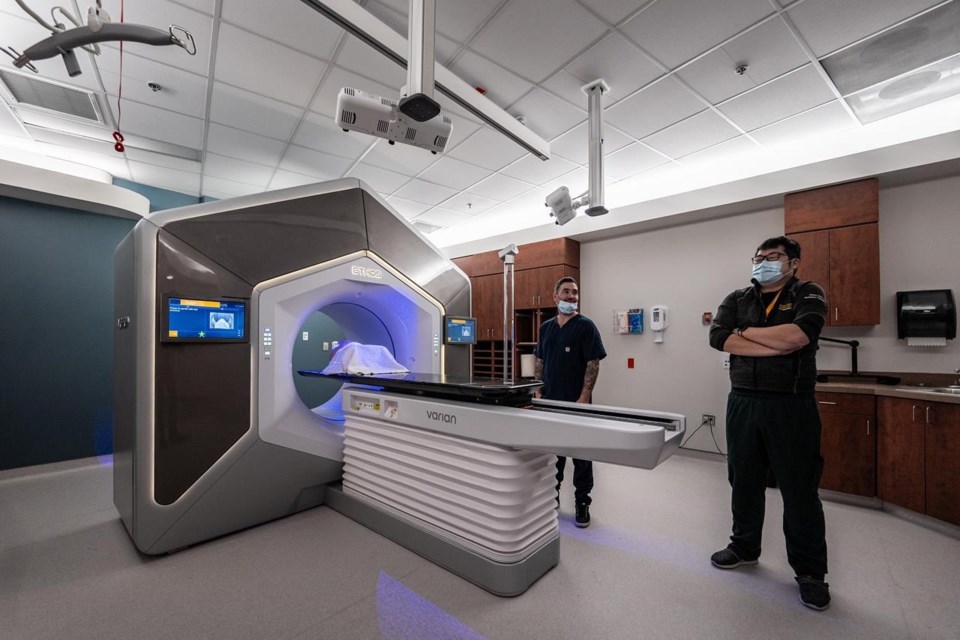HALIFAX — Cancer patients in Nova Scotia will soon be given access to a unique type of radiotherapy that health officials believe will transform the level of care of the disease in the province.
The Ethos therapy system uses imaging by artificial intelligence to pinpoint tumour sites for radiation, allowing surrounding organs to be spared from potential damage.
Health Minister Michelle Thompson announced Wednesday that the provincial government will spend $20 million to acquire two of the machines developed by California-based Varian, a Siemens Healthineers company. The two machines will be in addition to the first Ethos system the province acquired last year for clinical trials at the QEII Health Sciences Centre, in Halifax, one of the first sites in the world to run studies with the technology.
“This is the next step in the fight against cancer … that will make a significant difference in the lives of patients,” Thompson said.
The treatment could reduce the number of sessions needed to complete a course of therapy from the standard 20 to just five because it allows for greater precision, the minister said. The selling point for the technology, Thompson added, is how it can change a patient’s course of treatment.
“Precise cancer care, shortened treatment, shortened travel for those of us who live in rural Nova Scotia,” she said. “There were just so many benefits that compiled, and then there are better outcomes for patients.”
Early data from a 30-patient study showed that the technology took six seconds to generate high-quality images for daily treatment — compared with the one minute a conventional linear accelerator unit generally needs, health officials said. That time difference is significant, because patients need to hold their breath while an image is generated, an exercise that is difficult for some patients.
Dr. Helmut Hollenhorst, senior medical director of Nova Scotia Cancer Care Program, said the improved imaging in the new technology is significant because it allows the Ethos system to almost instantly adapt to changes in a patient’s tumour and surrounding organs.
“In the past we have just applied larger (treatment) margins and what this means is there is a lot of healthy normal tissue involved,” said Hollenhorst.
But with the increased precision, oncologists are now able to escalate the dose of radiation directed at the tumour.
“So we can deliver the same results in a shorter time,” Hollenhorst said.
Dr. James Robar, chief of medical physics at Nova Scotia Health, said there are seven treatment units in Halifax — six use conventional linear accelerator radiation machines and one is equipped with the Ethos system. Robar said each of the conventional machines have a 12-year lifespan and it’s his hope they will all be replaced over time.
“I think that platforms like Ethos are the natural evolution of where radiation oncology and radiation therapy are going, and yes they will replace the conventional technology,” he said.
Meanwhile, Thompson said treatment using the province’s current Ethos machine is set to begin in January, and the two new machines are expected to arrive in the coming months.
This report by The Canadian Press was first published Nov. 22, 2023.
Keith Doucette, The Canadian Press



